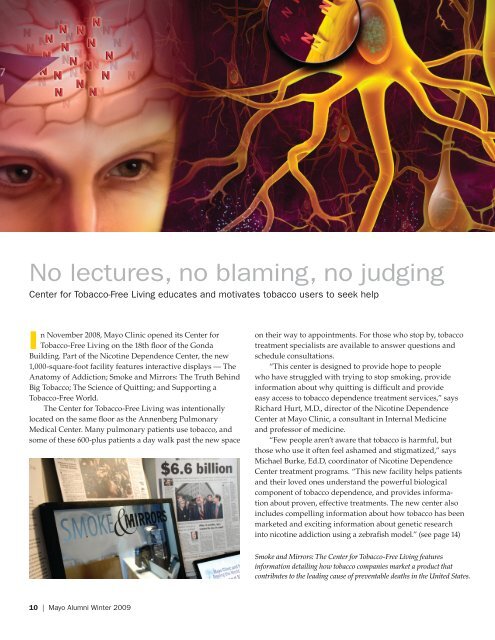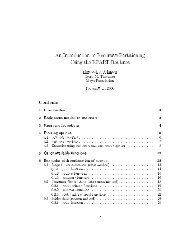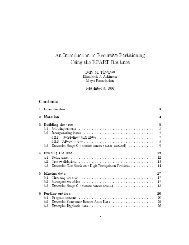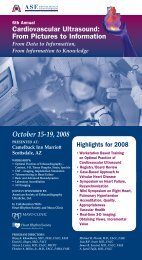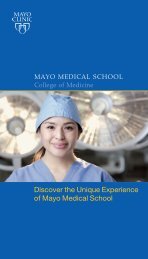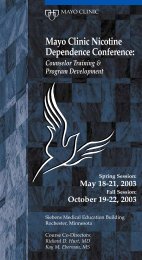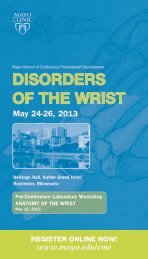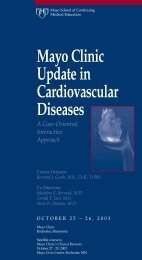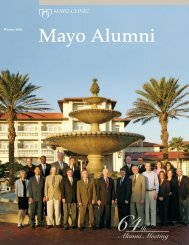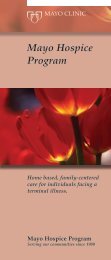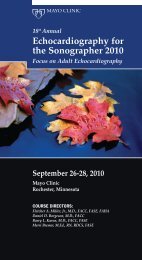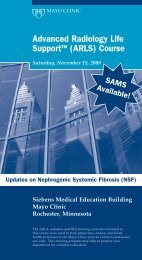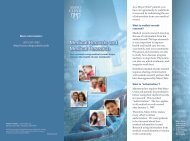Winter 2008-2009 - Mayo Clinic
Winter 2008-2009 - Mayo Clinic
Winter 2008-2009 - Mayo Clinic
You also want an ePaper? Increase the reach of your titles
YUMPU automatically turns print PDFs into web optimized ePapers that Google loves.
No lectures, no blaming, no judging<br />
Center for Tobacco-Free Living educates and motivates tobacco users to seek help<br />
I<br />
n November <strong>2008</strong>, <strong>Mayo</strong> <strong>Clinic</strong> opened its Center for<br />
Tobacco-Free Living on the 18th floor of the Gonda<br />
Building. Part of the Nicotine Dependence Center, the new<br />
1,000-square-foot facility features interactive displays — The<br />
Anatomy of Addiction; Smoke and Mirrors: The Truth Behind<br />
Big Tobacco; The Science of Quitting; and Supporting a<br />
Tobacco-Free World.<br />
The Center for Tobacco-Free Living was intentionally<br />
located on the same floor as the Annenberg Pulmonary<br />
Medical Center. Many pulmonary patients use tobacco, and<br />
some of these 600-plus patients a day walk past the new space<br />
on their way to appointments. For those who stop by, tobacco<br />
treatment specialists are available to answer questions and<br />
schedule consultations.<br />
“This center is designed to provide hope to people<br />
who have struggled with trying to stop smoking, provide<br />
information about why quitting is difficult and provide<br />
easy access to tobacco dependence treatment services,” says<br />
Richard Hurt, M.D., director of the Nicotine Dependence<br />
Center at <strong>Mayo</strong> <strong>Clinic</strong>, a consultant in Internal Medicine<br />
and professor of medicine.<br />
“Few people aren’t aware that tobacco is harmful, but<br />
those who use it often feel ashamed and stigmatized,” says<br />
Michael Burke, Ed.D, coordinator of Nicotine Dependence<br />
Center treatment programs. “This new facility helps patients<br />
and their loved ones understand the powerful biological<br />
component of tobacco dependence, and provides information<br />
about proven, effective treatments. The new center also<br />
includes compelling information about how tobacco has been<br />
marketed and exciting information about genetic research<br />
into nicotine addiction using a zebrafish model.” (see page 14)<br />
Smoke and Mirrors: The Center for Tobacco-Free Living features<br />
information detailing how tobacco companies market a product that<br />
contributes to the leading cause of preventable deaths in the United States.<br />
10 | <strong>Mayo</strong> Alumni <strong>Winter</strong> <strong>2009</strong>


